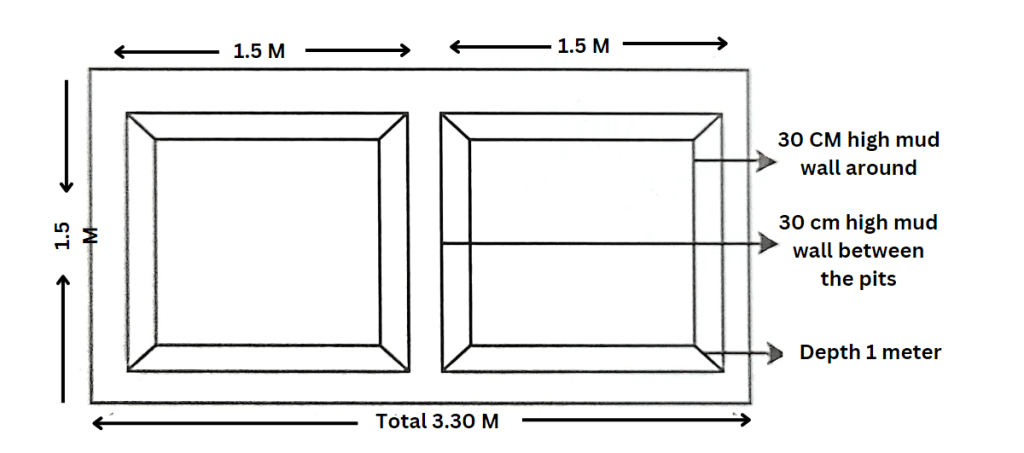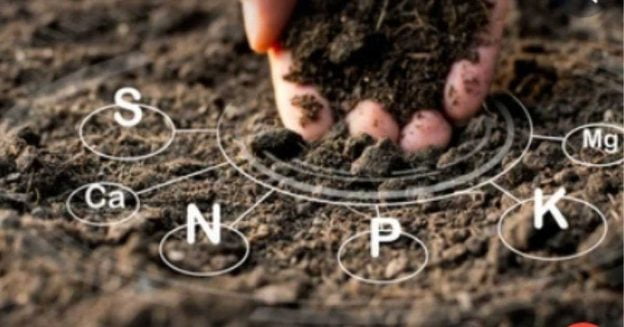For many years, farmers have been using farm yard manure (FYM) as a natural fertilizer to increase the productivity of their agricultural land. FYM is made from cow and goat excrement, hay, and similar organic materials.
FYM plays an important role in sustainable agriculture. It helps replenish soil nutrients, increase soil structure, increase water-holding capacity, and reduce reliance on artificial fertilizers. Additionally, using FYM helps reduce the environmental impact of animal farming by reducing waste generation and preventing the release of harmful gases into the atmosphere.
FYM continues to be an essential resource for farmers worldwide. This contributes to higher crop yields, reduced reliance on costly artificial fertilizers, and overall enhancement of agricultural land health and productivity.
You Can read: 17 Essential Nutrients For Plants: A Comprehensive Guide
What is Farmyard Manure?
Farmyard manure is prepared by composting organic wastes such as crop waste, cowshed waste, household waste, kitchen scraps, poultry droppings, etc.
Ingredients:
Cow dung, household garbage, cow urine, poultry droppings, kitchen scraps, crop residues, leaves, and small branches, That is to say, all kinds of organic waste from a house or farm can be used as farm yard manure.
Why is it Important?
- It increases the amount of organic matter in the soil by increasing productivity.
- This product enhances the various physical qualities of soil, such as its water retention, aeration capacity, color, and texture.
- An effective method to enhance soil microorganism activity and increase soil nutrient content.
- This helps in reducing the use of chemical fertilizers.
- Increases effectiveness of chemical fertilizers.
- They are helping to create a comfortable environment by cleaning the garbage in the sitting house.
Method of Preparation of Farm Yard Manure:
Making pits and sheds:
- You should select a place at a high home next to the residential house for making farmyard manure.
- Excavate two pits for the designated location, each measuring 3.30 meters in length and 1.15 meters in width, to a depth of 1 meter. The size of each pit should be 1.50 meters by 1.50 meters by 1.00 meters, with a 30-centimeter distance between them. The walls of the pit should be sloped to prevent soil from breaking away and filling the pit. One way to accomplish this is by constructing a broad, earthen barrier.
- 30 cm high earthen aisle should be provided around the pit so that rainwater cannot enter inside the pit.
- After that, you should make a hut over the hole with bamboo nets, hut-making materials, or tin so that sun or rainwater cannot enter.

Pit.
How to Make Farm Yard Manure?
- Fill a pit with dung, household garbage, cow dung, poultry droppings, kitchen scraps, crop residues, tree leaves, twigs, or anything else available at home.
- When the hole is full, you should cover the top fresh litter with a layer of wet soil.
- It would help to sprinkle a handful of urea fertilizer in the garbage before covering it with soil to speed up the decomposition process; it is better to have cow urine in the pit.
- You should then fill the second hole with rubbish and cover it with soil as before.
- The litter in the first pit will turn into compost within one to one and a half months (the time may be slightly more/less depending on the material).
- In this way, in 3-4 months, two pits will produce cyclic farmyard manure.
- First, once the preparation of manure in the pit is complete, remove it and either use it on the land or cover it with polythene in a convenient location for future use.
- Start pouring rubbish back into the empty pit again.
- In this way, You will prepare farm fertilizer in two continuous pits throughout the year.
The selection and initial preparation of the place for the production of farm yard manure:
- You should select a place near the residential house, on the edge of the field, or next to a pond where water accumulation is not possible.
- Ensure that manure or root material does not waste by rolling away from the site’s lower part.
- For laying the shed, it’s best to use pits/piles. If that’s not possible, you can create piles under trees.
- Create piles that are 3 meters long, 1.25 meters wide, and 1.15 meters high above the ground. You can adjust the pile length according to convenience.
- Using the specified amount of fencing can help in building compost piles and make the work easier.
Method of Stacking:
- To begin, place litter and other garbage in a layer that is 15 cm thick. It is important to note that you should compost fresh or green leaves, as this may result in a loss of potash and nitrogen content. Instead, leaves should be slightly dried before being used for layering.
- You should cut Leaves and other materials into long pieces and layered.
- After sprinkling 200 g of urea and 200 g of TSP fertilizer over the layer, You should cover the surface of the layer with dung and silt/loam soil 2.5-5 cm thick, which speeds up the decomposition process.
- 15 cm in the same way until it is 1.25 meters high. Make a thick layer with urea and TSP and cover it with dung and soil.
- If you cannot press on the pile, then after making the pile, cover the surface with soil. This prevents rainwater from entering during heavy rains and keeps it from drying out in the sun.
How can one inspect the compost manure pile in the farm yard?
- About a week after making the compost pile, insert a stiff stick into the center of the pile to see if the pile is excessively wet.
- If excessively wet, make occasional holes in the top of the pile with a stiff stick to allow air to enter the pile.
- After 2-3 days, you should close the holes with soil.
- If the pile becomes too dry, pouring water or cow’s urine occasionally on the top of the pile reduces the fear of the pile drying up.
- You can apply the compost to the land after approximately three months with the appropriate amount of cow urine and urea fertilizers.
- If you use these ingredients in lower quantities and the soil or materials are more compact, the composting process may take an additional month.
- If the arable/material turns gray or black on rotting and crumbles when pressed with fingers, consider it fit for use in the field.
I am Gaushoul Agam
𝐂𝐨-𝐅𝐨𝐮𝐧𝐝𝐞𝐫 & 𝐂𝐄𝐎
ToAgriculture
I am an experienced Horticulture Officer in the Department of Agricultural Extension in Bangladesh. I am committed to improving agriculture and farming.
I created ToAgriculture to address global food safety concerns. These concerns are caused by a growing population, diminishing farmland, and the impact of climate change on agriculture. I assist readers in learning modern farming techniques.
I also help them control pests and diseases. Additionally, I guide managing agriculture sustainably. All of this is aimed at creating a better and more successful future in farming.
I have experience in field crops and horticulture crops. I know about fruit and vegetable farming, managing pests and diseases, irrigation, and grafting. Come with me as I share my knowledge and experiences to help you create a better future.
